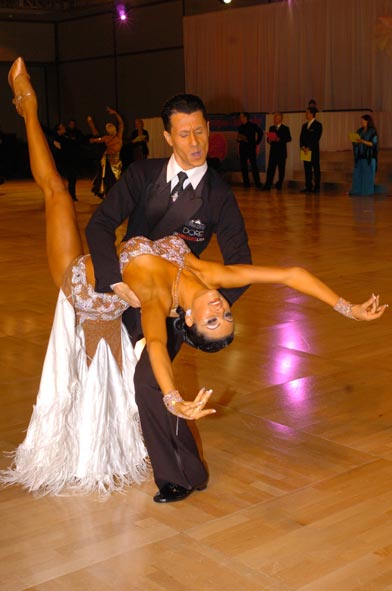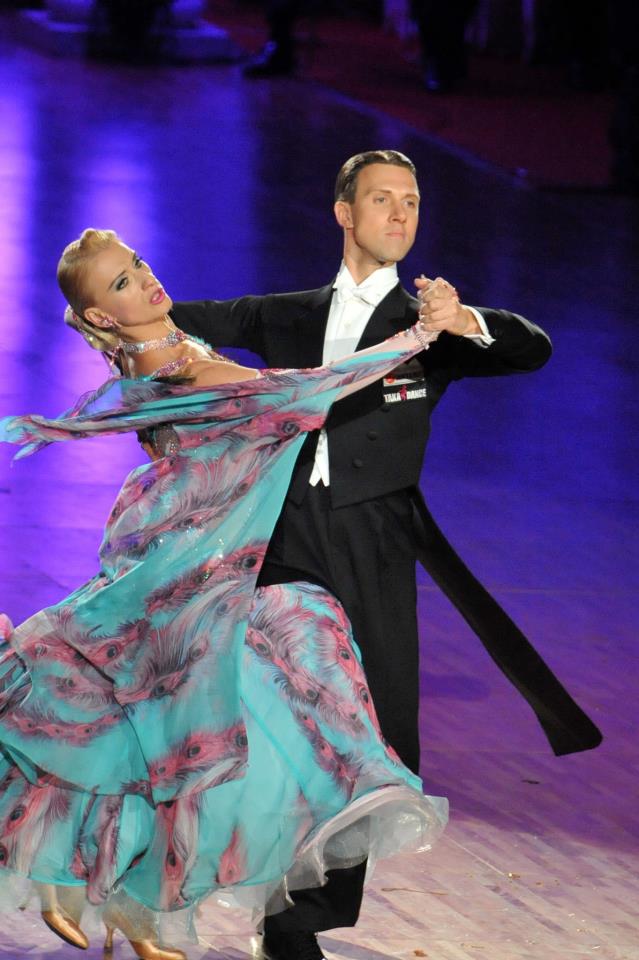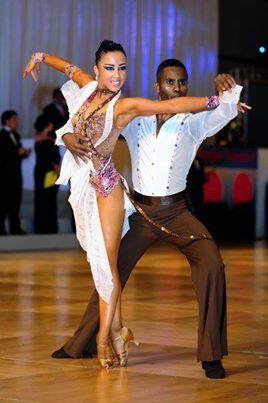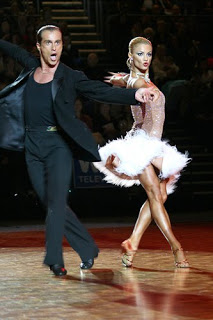How many lessons are held each week?
The Tufts Ballroom Team holds two group lessons a week; in the fall these lessons are offered at the Newcomer, Bronze and Silver levels and in the spring at the Bronze, Silver and Silver+ levels. These lessons are taught by team coach Mica Molojkovic, a former Amateur Latin National Champion in Serbia and a competitor and teacher for over 20 years. The team holds these lessons on Monday and Thursday nights in either the Hill Hall Aerobics Room or the Jackson Dance Lab. The team also offers three weekly open practices for all team members regardless of level. During these practices, upper level dancers are available to review previous lesson material, drill technique, and answer any questions that arise. For information regarding our lesson schedule, visit our lessons page.
Are there tryouts?
The Ballroom Team does NOT hold tryouts. ANYONE is welcome to join the team REGARDLESS OF EXPERIENCE. The great majority of our current membership joined with absolutely no ballroom dance experience.
Do I need a partner to join?
Dancers do NOT need a partner to join the team. The Team Captains ensure that all Newcomers are paired up with a partner for the first set of competitions.
Are competitions mandatory?
Competitions are NOT mandatory. While the Team as a whole attends and competes at three competitions each semester, it is up to the individual dancer whether to attend or compete in these competitions or not. If you choose not to compete, attending competitions can be an excellent way to bond with and cheer on fellow team members.
How much of a time commitment is the Tufts Ballroom Team?
The Tufts Ballroom Team is as much of a time commitment as the individual dancer decides to make it. While improving one’s dancing skills requires practice and dedication, the Tufts Ballroom Team can definitely be incorporated into a busy schedule. Many of our dancers participate in other extracurricular activities such as Crew, Quidditch, Theatre, and Burlesque on top of their academic load. Furthermore, as competing is not mandatory, the Tufts Ballroom Team also welcomes dancers who are more interested in learning to dance socially.
What is Ballroom Dance?
The foremost characteristic Ballroom Dance is that it is always danced with a partner. There are many different styles within the umbrella of “Ballroom Dance” as a whole.
What are the different Ballroom Styles?
There are four styles of competitive Ballroom Dance: American Smooth, American, Rhythm, International Standard, and International Latin. While the American styles share some similarities to the International styles, the former are competed solely in the United States while the latter are competed all over the world.
In Smooth and Standard, dancers travel around the floor while maintaining strong frame and posture. While both styles are danced in formal attire, the primary difference between the two is that Smooth utilizes both closed and open dance positions while Standard is solely danced in a closed position.


In Rhythm and Latin, dancers typically travel less while highlighting more accentuated hip action and partner interaction. The Rhythm and Latin styles are danced in a flashier attire than Smooth and Standard. The primary difference between these styles is that Rhythm highlights the action of stepping onto a bent leg while Latin emphasizes shifting weight onto a straight leg.


What are the different Ballroom Dances?
There are 19 dances that span the four styles of competitive Ballroom Dancing:
Smooth
Waltz, Tango, Foxtrot, Viennese Waltz
Standard
Waltz, Tango, Viennese Waltz, Slow Foxtrot, Quickstep
Rhythm
Cha Cha, Rumba, Swing, Bolero, Mambo
Latin
Cha Cha, Samba, Rumba, Paso Doble, Jive
Are there other social forms of Ballroom dance?
There are many other social ballroom dances such as Argentine Tango, Salsa, Merengue, Bachata, Hustle, and West Coast Swing.